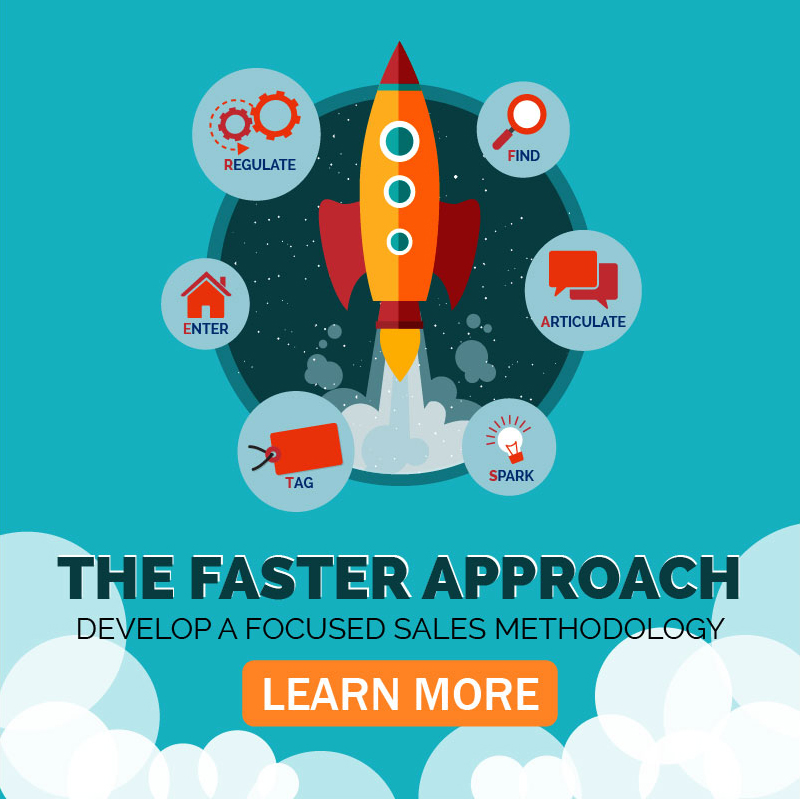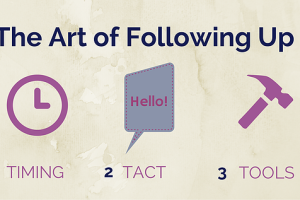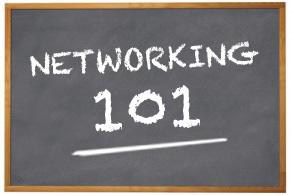One of the most fundamental laws of business is that healthy sales drive profitability. We know that. We also know that healthy customer relationships are what sustain those sales and generate new referrals.
Yet for some odd reason, whenever some of us go into “sales mode,” we seem to forget that we are still human beings interacting with other human beings. People like having conversations, not being talked to, yet we all too often let our sales pitches devolve into enthusiastic monologues that leave little or no room for customer input.
We become so enamored of the sale that we lose connection with the buyer. In a word, we become machines.
That’s too bad, because our customers would rather do business with human beings. Today’s customers are interested in forming win-win relationships with vendors who take the time to understand their problems and then offer good-fit solutions.
Machines can make presentations. But they can’t form relationships.
That’s why I think it’s vital to spend some time discussing our sales interactions and avoid the dreaded “machine syndrome”.
Don’t assume you know what your client needs.
A great first step for many of us is to do a reality check and remember where we stand in relation to our prospective customers. They’re the ones with the problems; we’re the ones offering solutions.
At least in theory.
Too often our solution-mongering addresses “problems” that we only assume our customer is facing, meanwhile failing to address their immediate (and very real) pain points. Before we attempt to sell someone something, we need to do our homework and uncover as much as we can about their needs and desires.
And even then, we should go into our sales presentations with open minds, eager to better understand those needs and desires from the client’s perspective. We have to check our egos at the door and remember that our job is not simply to sell something, but to form a profitable long-term relationship.
Talk less. Listen more.
Of course, if we’re going to be in a relationship, then we have to work on our relationship-building skills, and knowing when to hold our tongues is a big one.
A phrase I always re-read is one that Mark Suster describes (Aussie term) for salespeople who don’t know when to stop talking – crocodile salespeople: “big mouth and no ears.” Such people are always talking, he says. “They don’t take the time to realize what your true motivations are because they’re too busy telling you what they THINK you want to hear.”
Unfortunately, that’s a description that hits far too close to home for many of us.
Perhaps we fear that silence on our part will betray a lack of confidence or suggest that we’re at a loss for words and therefore not as competent as we claim to be.
Perhaps we’re subconsciously persuaded that the more we talk about our product, the more attractive it will become, and the more likely our prospective customer will finally see value and decide to buy.
Or perhaps in our enthusiasm over a potential deal we simply forget our manners and monopolize the conversation without quite meaning to do so.
Whatever the case, we do well to take a few lessons from seasoned pros who have learned the hard way that less is often more when it comes to sales negotiations.
These days, active listening is an invaluable sales skill. Active listening means not interrupting when the client is speaking—sometimes biting our tongues when our instincts tell us to interject a plug for one of our product’s key features. It also means asking open-ended questions that allow us probe deeper into a client’s expressed needs without that sinister aim of setting the client up for our next talking point.
And lately, as I think about it, lately in my training of new (ish) sales people, I find it odd when I ask them about there previous sales education, and so few mention being taught how to listen to answers.
It’s WONT help you to assume or act overly confidant (ignorant) of the customers question until it’s fully been expressed. When you ask a question your mindset should never be to wait until the customer stops talking so that you can begin pitching again. Customers can sense when you aren’t really paying attention to them, and this cues them to simply stop wasting their time and begin looking instead for a way to end the conversation altogether.
What’s more, active listening means paying close attention to nonverbal cues and knowing when silence is a friend rather than an enemy to the conversation. Now it may some long, but I’ve been using around three to four seconds of silence before responding to customer questions or comments for 90% of the initial discovery questions.
This conscious pause will make who you’re speaking with feel heard and comfortable enough to talk more, since your pause demonstrates that you have a sincere interest in what they are saying.”
Another way to help our customers feel heard is to paraphrase key takeaways from the conversation in our own words, using phrases like, “If I’m understanding your needs correctly, you’re saying…” (I LIKE THIS VERY MUCH TOO).
It may also be helpful to take notes during a sales consultation—not just as an aid to your own recollection, but as a visible way of demonstrating to the customer that you’re interested in accurately understanding what they have to say. We just have to be careful not to go overboard and pay more attention to our notepads than to the speakers’ faces.
It may seem like the listening skills described above would undermine a your opportunity to pitch your product, but that’s really not the case at all.
In all honesty, when I made one of the largest sales of my career, I practically did nothing. After developing a friendship with the buyer, I asked him months in why I won his business. He said that I was the one that he felt was not trying to sell him and I didn’t pretend to know all the answers…
The lesson I learned from this experience is one we would should always remember: relationships are more enduring than pitches, and authenticity is more persuasive than polish.
Human do business with humans… We’ll go further with our prospects if we become citizens of their worlds and invite them to become citizens of ours.
We start by building rapport. Making the sale is about asking questions, answering questions and building a trustworthy win-win relationship.
Our goal in today’s sales environment is to get a conversation going, learn as much as we can about our prospect’s needs, and then artfully demonstrate how our product meets those needs—all while behaving like a real conversation partner rather than someone motivated by a previous agenda.
The principle that guides this kind of sales attitude is simple. As this paper from the U.S. Small Business Administration puts it, “People tend to do business with those they like and trust. … You are operating in a context of integrity…with the goal of having customers for the long-term, not just for the moment.”
In other words, we’re trying to revise the old, adversarial image of sales that makes interactions into a zero-sum game where you either win or lose. We’re focusing instead on accurately understanding who are customers are and whether and how we can meet their needs—even if it doesn’t immediately lead to a sale.
When I step in a room full of people, I always start the meeting with a very brief introduction of our companies and backgrounds.
Then I quickly clear the floor for the customer to begin describing what they do and the problems they encounter.
When it comes time to begin demonstrating our competence to address these problems, I start by recommending, “What we find” answers, highlighting a few examples of how we have handled similar situations with other companies in the past.
Such things demonstrate competence without sounding “canned.” They also invite prospects to ask their own questions and to share more information about how their situations are both alike and different from the ones you describe.
Your end goal should be to get the customer to trust you enough to talk about their existing problems.
As the ebb and flow of conversation proceeds, it should become obvious when a customer expects us to elaborate on some of our ideas about how to solve their problems.
Emphasize customer benefits, not just product features.
Let’s repeat that… Emphasize customer benefits, not just product features.
As long as we’re talking about solutions, let’s get something straight: we, you, all of us salespeople are right to be enthusiastic about our product’s features!
You damn well sure be even if you don’t own the company. Such enthusiasm demonstrates confidence, and it’s important for us to be able to identify those facets of our products that give them special value and distinction among competitive offerings in the market.
Nevertheless, you should also recognize that value is a highly relative concept.
What’s valuable to one customer may or may not be valuable to another, and it’s our job to understand the difference.
It’s about BENEFITS and SOLUTIONS TO EXISTINGS PROBLEMS, not features.
What that means, of course, is that no matter how awesome or distinctive a product feature might seem to us, it’s only going to be valuable for a sales pitch if it addresses one of our prospect’s pain points. So we have to do a good job of making sure we understand our customers’ needs and then tailoring our discussion of product features to address those needs first.
It may be appropriate to bring up one or two ancillary features that a customer would perceive as “bonus” to the deal, but going on and on about product features that are of only minor interest is a sure-fire way to sound like an infomercial pushing gimmicks rather than a human being helping to solve a problem.
Because if you just start vomiting features after features, you’ll start to lead your customers to question whether they can handle or afford the complexity of the solution we’re proposing.
We may inadvertently communicate that we’re trying to sell them a solution designed to address someone else’s problems, not theirs.
Above all, LET’S REMEMBER machines can talk, but they can’t really listen. They can spout out information, but they can’t demonstrate value. Machines can list features, but only human beings can apply solutions.
As salespeople, we owe it to ourselves to be different. We shouldn’t be so constrained by our sales “programming” that we miss out on the give-and-take of meaningful customer relationships. One of the most valuable things we bring to the table in any sales discussion is our humanity—including the lessons we’ve learned from past mistakes.
Today’s consumers are looking for dialogue and collaboration, so let’s be sure we’re not sending an android in to do a human being’s job.








